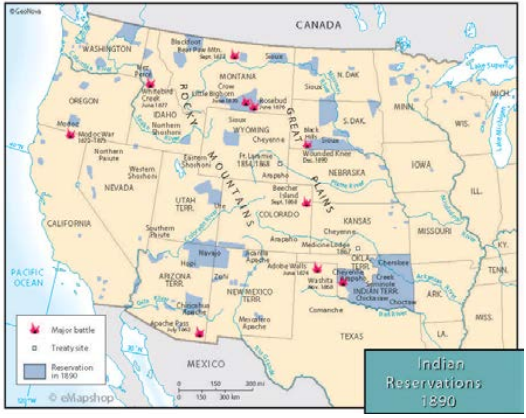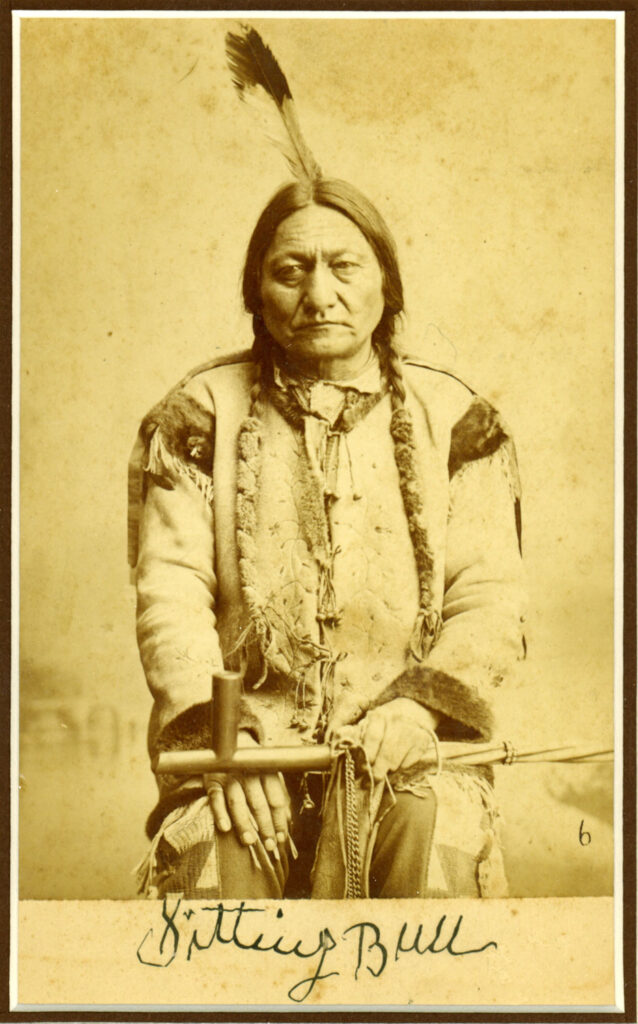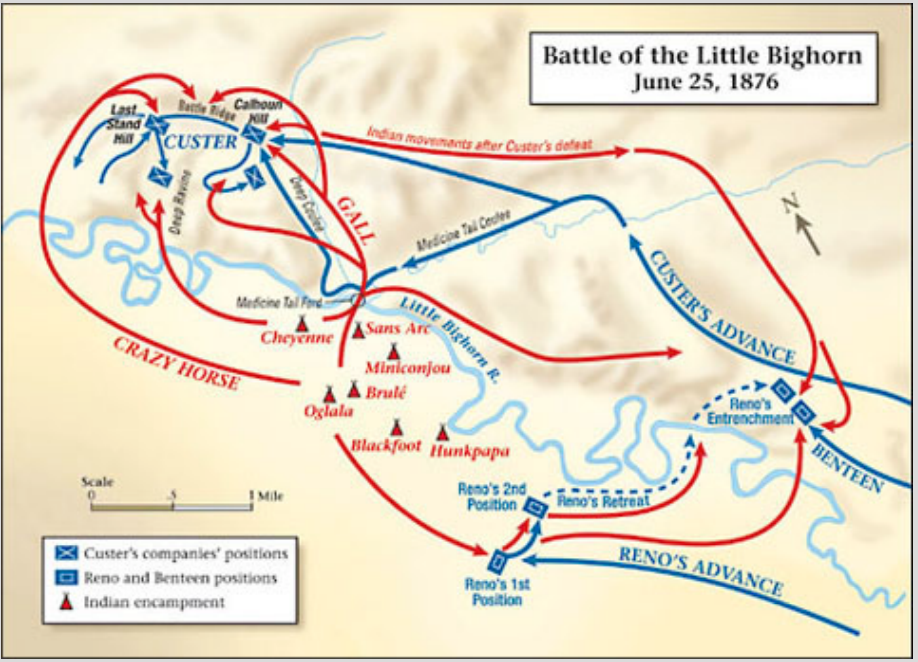Section #8 - Efforts to end federal debt, close the U.S. Bank and restore hard currency lead to recession
Chapter 73: The Southeastern Tribes Are Evicted Along The “Trail Of Tears”
March 1832
The Supreme Court Rules That Indian Tribes Are Sovereign Nations
With his campaign against the Second Bank successfully concluded, Andrew Jackson charges after his next priority – forcing the remaining eastern tribes to new “reservations” west of the Mississippi River, so that whites can settle on their former lands.
This race to occupy Georgia is also accelerated in 1829 by the discovery of gold in the northeastern mountains around Lumpkin County.
The original legal basis for the transfer of land traces to the Indian Removal Act passed in Congress on May 28, 1830.
This, however, is immediately challenged in court by injunctions brought by Henry Clay and Daniel Webster, and the matter ends up with the U.S. Supreme Court. It follows with two contradictory rulings, issued a year apart.
The first case, in March 31, is Cherokee Nation v Georgia which denies the claim that Native America tribes are a “foreign nation” and therefore they must comply with the Congressional Act.
But in March 1832, in Worcester v Georgia, the court reverses course ruling in favor of the Indian claims, saying that settlers may not occupy Cherokee lands without tribal consent.
Associate Justice Joseph Story expresses relief at the time that justice has finally been served:
Thanks be to God, the Court can wash their hands clean of the iniquity
Ex-General Jackson is said to have had a very different reaction, and one that will prevail:
John Marshall has made his decision; now let him enforce it!
December 29, 1835
Georgia Ignores The Ruling And Acquires Cherokee Land In The Treaty of New Ochoata
The state of Georgia simply ignores the federal laws – another act of “nullification” – and supports the land grabs by white settlers.
The President is sufficiently alarmed by the lawlessness to meet with John Ridge, son of a Cherokee chief, educated at the Foreign Mission School in Connecticut, and acting as counsel for the tribe in Washington.
Jackson assures Ridge that he does not intend to use military force in Georgia, but encourages him to work out a formal treaty to resolve the issue.
Ridge and a sub-set of Indian elders proceed to negotiate the Treaty of New Echota, which legally transfers the Cherokee land. It is signed into law on December 29, 1835, despite opposition from Principal Chief John Ross.
This treaty represents the death knell for the southeastern tribes in their efforts to preserve their traditional homelands.
It will also result in the 1839 assassination of John Ridge and his father by the pro-Ross backers who accuse them of betraying their Cherokee heritage.
1836 Forward
The Removal Of The Eastern Tribes Moves Ahead
What happens next is the forced removal of the Cherokees in what becomes known in their lore as “the trail where they cried” – latter translated into “The Trail of Tears.”
General Winfield Scott then proceeds in 1836 to drive the remaining Creek resisters in Alabama off their lands; in 1837 he turns to the Choctaws in Mississippi, and in 1838 he leads a force of 7000 troops against the remaining Cherokees in North Carolina. By 1842, after an expense of nearly $20 million, the wars against the Seminoles are concluded.
Key Events Related To The “Indian Removal” From Their Eastern Homelands
| Nations | Ancestral Home | “Trail of Tears” |
| Choctaw | Mississippi | About 17,000 moved in 1831, with 3-6000 killed along way. About 5500 stay in Mississippi and agree to “follow the law,” but the white settlers constantly harass them. |
| Creeks | Alabama | Most moved in 1834, with Scott completing the job in the Creek War of 1836. |
| Chickasaw | Mississippi | They are concentrated in Memphis in 1837 then driven west and forced to join the Choctaws Nation, until later regaining independent status. |
| Cherokee | North Carolina | In 1838 Van Buren sends Scott to round up all Cherokees in concentration sites in Cleveland, then drives them west. The Cherokees survive well and their population grows over time. |
| Seminoles | Florida | The Seminole Wars run from 1817 to 1842, at high cost and with renegade bands finally taking refuge in the Everglades. |
All told a total of some 120,000 people from the so-called “five civilized tribes” are forced to leave their ancestral homes for the new “Indian Territory” – land “reserved” for them in what will eventually become the eastern half of Oklahoma.
Up North, another roughly 90,000 Indians are herded into concentration sites from Memphis to Cleveland, and then transported by wagons and flatboats across the Mississippi to their new reservations.
Estimates of death from hardship or disease during the exodus run from 15-25% of those in transit.
As America’s borders shift into the Louisiana Territory and beyond, local tribes will again be forced to move from the homes to accommodate the white settlers, often backed by the U.S. Army.
1835 Forward
The “Trail Of Tears” Symbolizes The Long Sad Fate Of America’s Tribes
In the end, the fate of America’s native peoples is not all that much different from that of the Africans.
Most have greeted the white settlers in peace, helped them navigate the new land, and sought favorable relations.
In return, they’ve gotten “The Great Father,” promising them fair treatment in one inaugural address after another, from Washington through Jackson, reneging time and again. High-minded rhetoric quickly giving way to self-interest: the wish to occupy their tribal homelands, the power to make this happen, and justification based on the inherent superiority of the white race.
Some tribes fight back: Tecumseh and the Shawnees in 1813, the Red Stick Creeks in 1814, Blackhawk and the Sauks in 1832, Osceola Seminoles in 1832, out west, the Comanches and the Sioux. All too little avail beyond the lasting personal honors of counting coup.
As the Africans are enslaved, so too are America’s native peoples – not in chains, but on “reservations.”

June 25, 1876
Sidebar: The Tribes Count Coup One Last Time at the Little Big Horn


Any residual empathy in the North for the plight of the tribes is eroded by events during America’s Civil War.
When the conflict breaks out, several tribes who own African slaves align with the South. Some actually form brigades and engage in the fighting as Confederates – most notably at the 1862 Battle of Pea Ridge, in Arkansas. There both Cherokee and Choctaw warriors fight under the leadership of Albert Pike and Stand Watie. Watie is a Choctaw who grows up in Georgia, is educated, becomes a Christian, owns slaves, and eventually is named a brigadier general in the CSA army. (As such he is one of only two Indians of that rank, the other being Ely Parker of the USA.)
After the Union wins the war, the notion of “Indian independence” vanishes, and the U.S. government is unabashed about coercing all tribes to obey the will of “their great white father” in Washington. When reservation land is needed to build railroads, DC simply takes it. When gold is found on Indian land, they are again “re-located.” When other tribes, such as the western Cheyenne, need to be moved, tribes “donate” the needed space.
The Navajo end up in northern Arizona; the Shoshone and Nez Perce in Idaho; the Crow and Blackfeet in Montana; the Sioux in South Dakota; the Modocs in northern California.
The “treaty revisions” and relocations go on until roughly 1889, culminating with white “sooners” rushing into the western half of the original Indian Territory and finally establishing the state of Oklahoma.
In the end, the land mass set aside in 1830 has shrunk by more than half, and it is occupied by a patchwork quilt of “Nations,” each with their own cultures and laws, and often with a history of prior conflicts.
On June 25, 1876, the Native American tribes – this time in the form of the Lakota Sioux and the Cheyenne – express their last defiance against the white intruders by thrashing General George Armstrong Custer and the Seventh Cavalry at the Little Bighorn River in Montana. After that, the Indian nations retreat forever to their ghetto reservations, even as black slaves are being emancipated.
